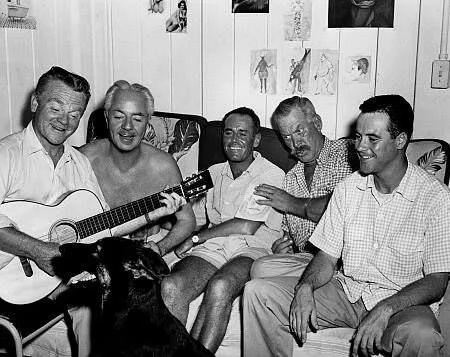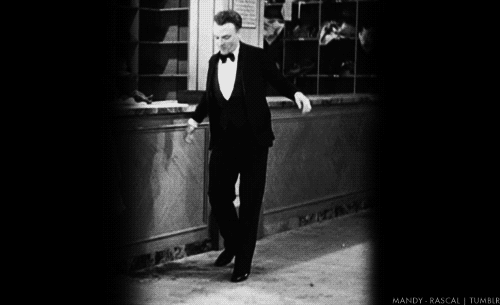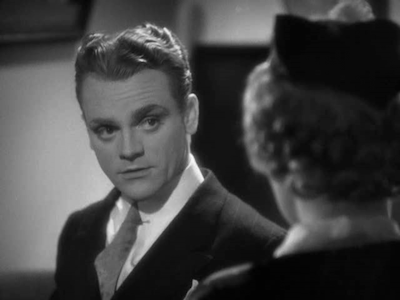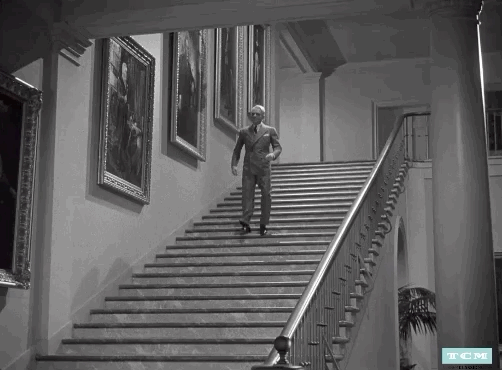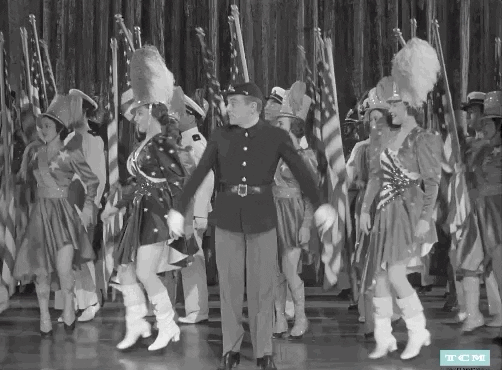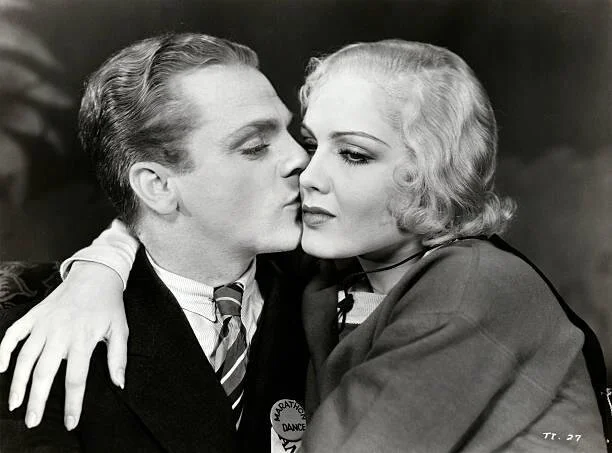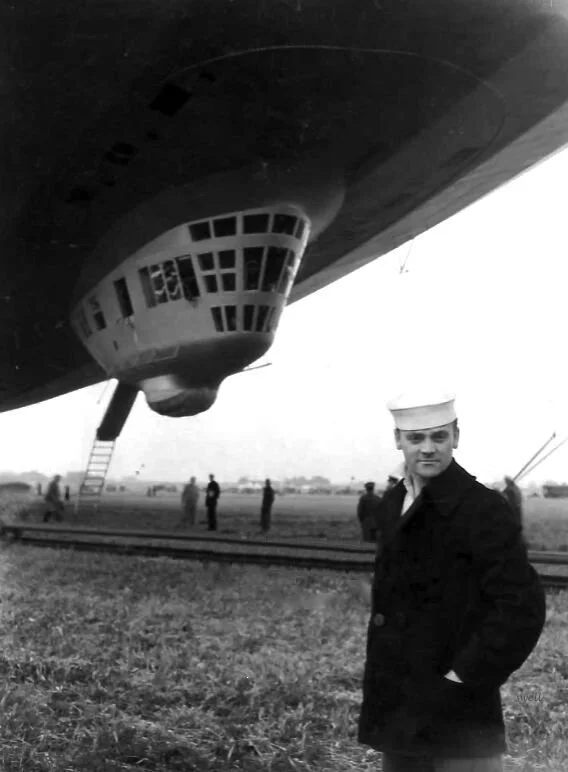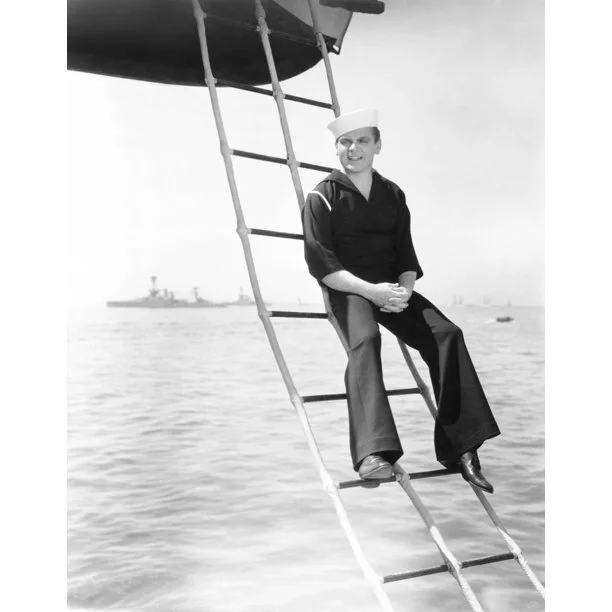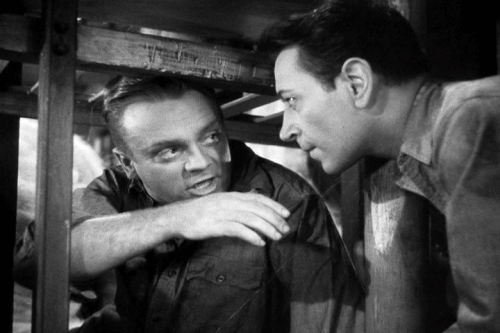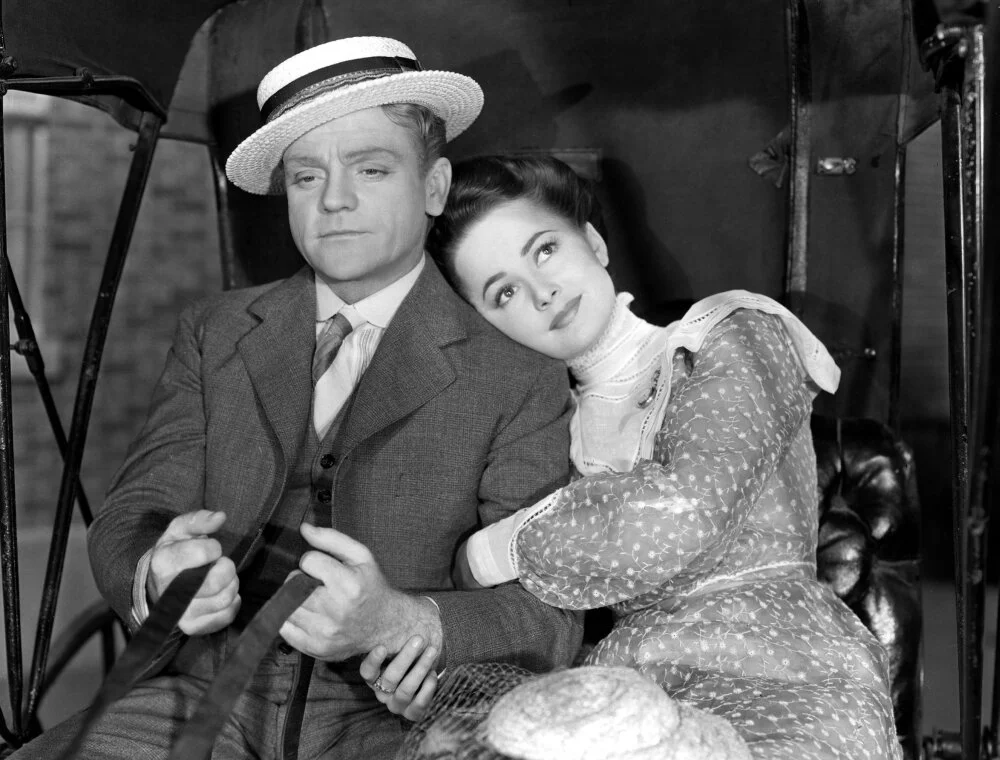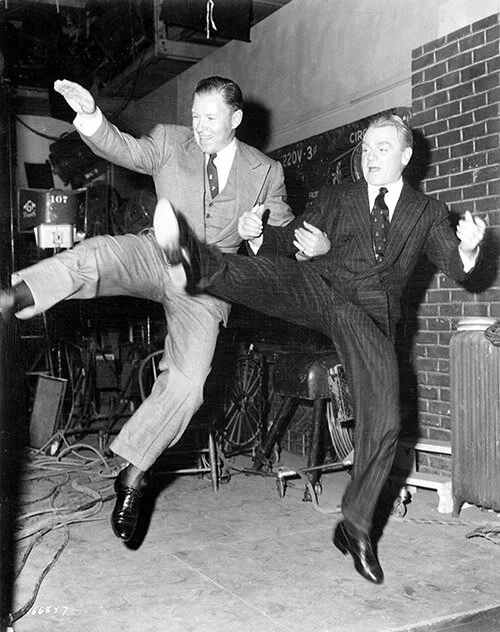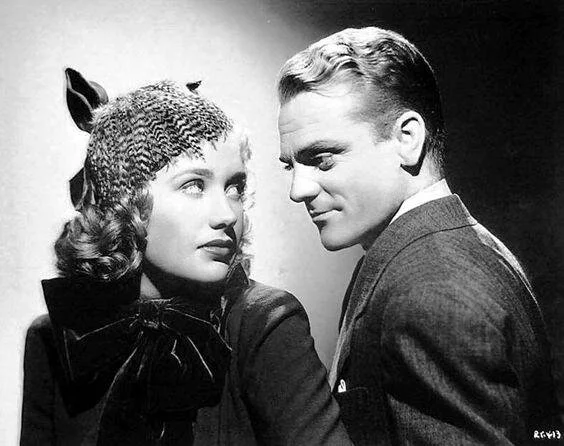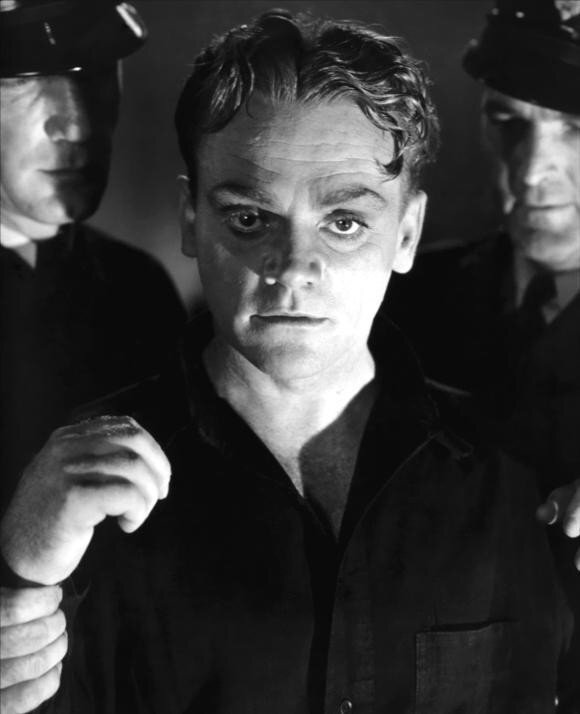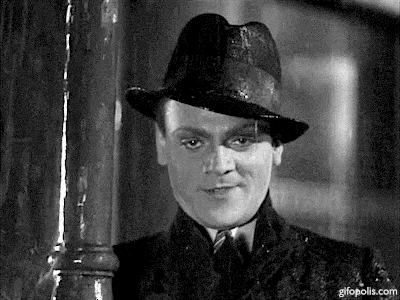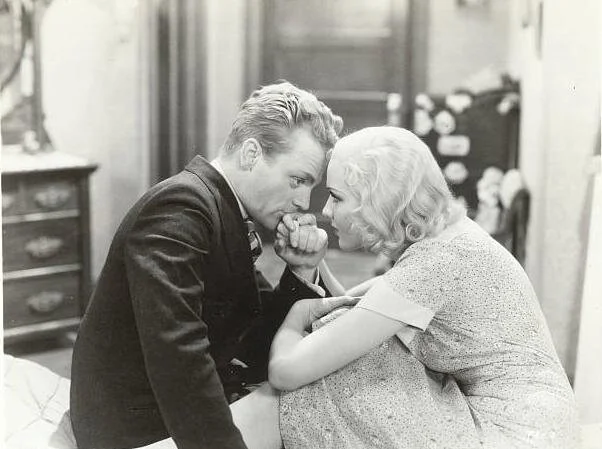James Cagney
At James Cagney’s American Film Institute Life Achievement ceremony, Charlton Heston called Cagney “one of the most significant figures of a generation when American film was dominant. Cagney, that most American of actors, somehow communicated eloquently to audiences all over the world ...and to actors as well." A passionate communicator, ardent fighter, and one of the most stylized of actors and dancers, Cagney was one of cinema’s most beloved artists.
Born in July of 1899, Cagney grew up on New York’s Lower East Side to an Irish-American family. He initially attended college at Columbia University for a semester before dropping out to help his family when his father died during the Spanish flu pandemic in 1918. During this time Cagney had many odd jobs, ranging from junior architect to bellhop. He even began a promising career as a lightweight boxer and a semi-professional baseball player. Another one of these many endeavors included working as a stagehand for a local NY settlement house where his brother performed. When his brother couldn't go on one night, Cagney stepped in as a last minute replacement. This was the start of his meteoric career.
He started making his way as a chorus dancer on Broadway, learning how to be a hoofer with the help of soon-to-be wife, Frances “Billie” Vernon. The two worked together in Vaudeville and on Broadway securing small roles in various shows. One of these was Penny Arcade (1929) in which Cagney was cast as the lead. The popular entertainer Al Jolson (The Jazz Singer) spotted him and bought the film rights, later selling them to Warner Brothers. Cagney along with co-star Joan Blondell (A Tree Grows in Brooklyn) were asked to reprise their roles as the leads. A great success, Cagney was quickly signed to an extended contract with his now home studio, Warner Brothers.
Some of his earliest films featured the tough guy persona that would become his trademark, such as Doorway to Hell (1930) and William Wellman's Other Men's Women (1931). It was the unplanned switch of parts in another Wellman picture, that gave Cagney his big break and made him a star. Originally cast as the good-guy to Edward Wood's Tom Powers in Public Enemy (1931), Wellman realized that Cagney’s vitality would be better suited for the other role. The change was made, and there was no looking back for the picture or for Cagney. One of the earliest gangster pictures, Public Enemy is regarded as one of Cagney's finest performances and a classic of the genre.
Cagney was quickly made a star and just as quickly cast in more gangster and tough guy roles, with very few exceptions. Some of these highlights include Hard to Handle (1933), Lady Killer (1934), Angels With Dirty Faces (1938), and Roaring Twenties (1939). Some of the few exceptions to this lovable hooligan image included portraying a boxer in Roy del Ruth's Winner Take All (1932), as a race car driver in Howard Hawks’ The Crowd Roars (1932), and in a comedic turn as a theatrical producer in Michael Curtiz's Jimmy the Gent (1934) with his wisecracks as "rapid as automatic fire."*
Known as “The Professional Againster" by studio head Jack L. Warner, Cagney frequently had disputes with Warner Brothers about the direction of his career. Warners would always end up coming to his terms with Cagney securing more than he had bargained for. The most impactful example of this was when in 1934 Warner Brothers had already made several breaches to Cagney’s contract, including making him make more than the specified 4 films a year. Cagney didn’t take this lying down as most would. He took Warner Brothers to court and won. He also won himself a better contract with more money, more artistic control, and input over future projects. Wins like this helped pave the way for others like Olivia de Havilland to change the fabric of the studio system and Hollywood.
While he was waiting for the legal process to conclude, he worked as an independent, eventually pairing up with the small Grand National Studio which featured him in different kinds of roles and expanded his image.
The first year that Cagney was back at the Warner Brothers lot he made more money for the studio than any of its other stars. Despite being one of the studio’s top earners, when his contract was up Cagney was eager to form his own production company. He was soon persuaded, though, to stay and star in a few more films. Among them City for Conquest (1940) with Ann Sheridan (Woman on the Run), The Strawberry Blonde (1941) with Rita Hayworth (Gilda) and Olivia de Havilland (The Heiress), and The Bride Came C.O.D. (1941) with Bette Davis (Dark Victory)
His next big feat came when he convinced Warner's to star him as the patriotic George M. Cohan in the biopic Yankee Doodle Dandy (1942). Cagney was perfect for the role. He was an accomplished dancer who also had a distinct style of his own. He was athletic, angular, agile, absorbing, and strangely mannered all at once. Cagney brought his own hecticly styled panache and it won him his only Oscar. Filmed starting the day after the attack on Pearl Harbor, the cast and crew began working in a “patriotic frenzy,” with Cagney “strutting his way through routines as if he had reinvented dance."*
After this achievement the only artistic options that seemed available were to repeat old successes or play less stylized parts which could ruin the already beloved Cagney image. He tried both. He was good at the latter, but the films were anything but special. With the former, it became hard to choose something that stood out. Rarely did he score, but the few times that he did were significant career highs, such as his roles as a Coca-Cola executive in Billy Wilder's comedy One Two Three (1961), when he played an Admiral in The Gallant Hours (1960), as the curmudgeonly Captain in Mister Roberts (1955), and most memorably as a psychotic mobster Cody Jarrett in White Heat (1949).
Cagney will forever be associated with the gangster film and the embodiment of everything characteristically brutish and brash about that persona, yet audiences loved him as one of their favorite leading men. Why? He knew that under the hard tough guy exterior that there had to be something human if the audience was to accept and sympathize with him. How else could a villainous character be a successful lead? This was a part of his unbelievably great instincts** and his conscious or perhaps unconscious style.* His portrayals could be brash/bold/harsh but were always marked by an uncontrived impulsiveness. Orson Welles (Citizen Kane) claimed that he may have been “the greatest actor who ever appeared in front of a camera." He acted as though he were playing to a large audience and yet he never felt fake. He was flamboyant and inventive, but he never hammed a scene.“Dead and undimmed, he is proverbial now. a force of life and one of those stars who grow more lovely as the years pass."
*Thomson, David. The New Biographical Dictionary of Film. Third Edition. New York: Knopf, 2002.
**Miloš Forman
Core Films
*= my personal favorites
The Public Enemy (1931)*
Lady Killer (1933)*
G Men (1935)*
Each Dawn I Die (1939)
The Roaring Twenties (1939)*
The Bride Came C.O.D. (1941)*
Yankee Doodle Dandy (1942)*
White Heat (1949)*
One, Two, Three (1961)
For More
Books
Biography; Cagney by John McCabe: https://www.amazon.com/CAGNEY-John-McCabe/dp/0786705809




